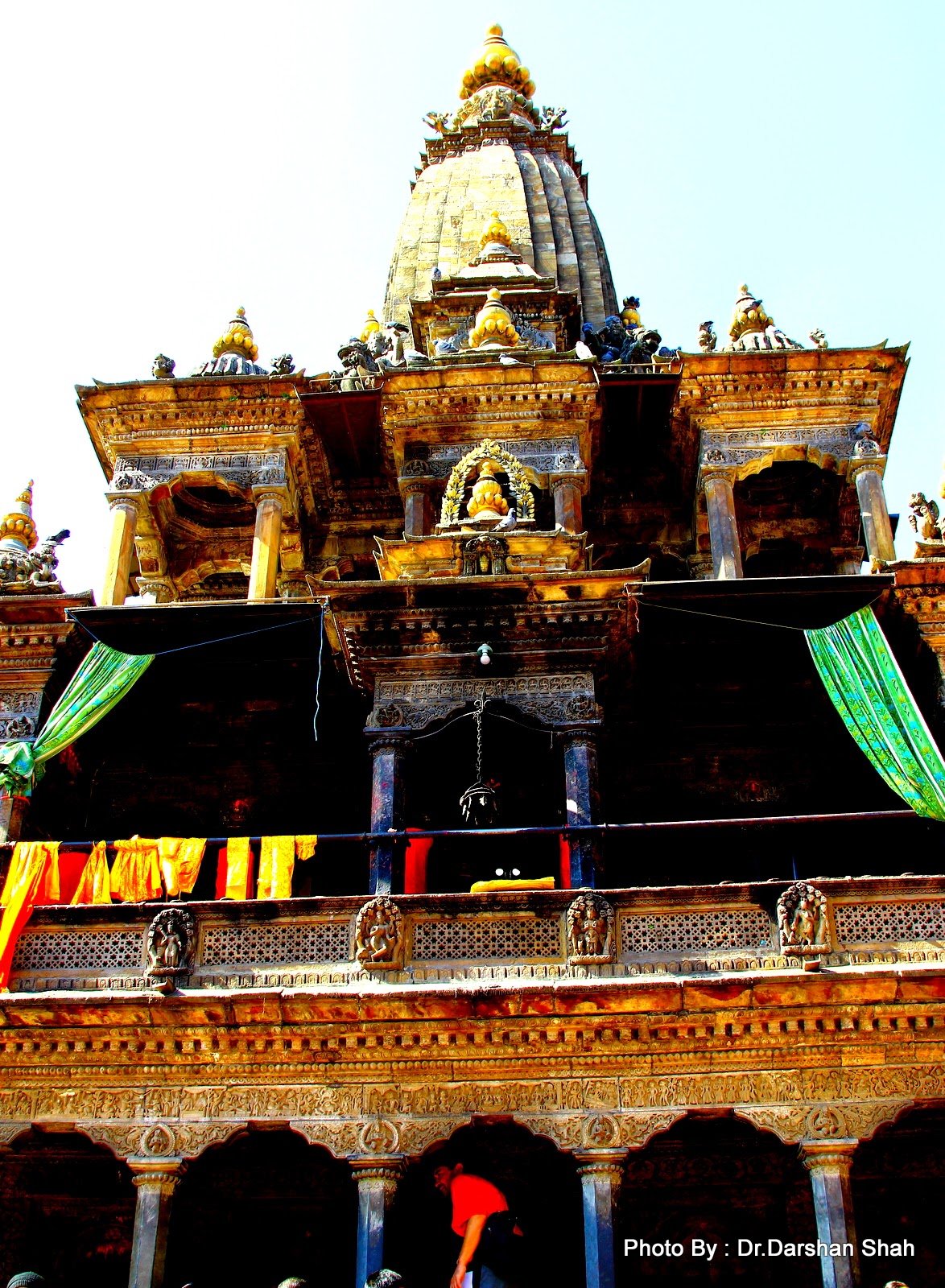Patan Durbar Square is situated at the centre of Lalitpur
city. It is one of the three Durbar Squares in the Kathmandu Valley, all of
which are UNESCO World Heritage Sites. One of its attraction is The Ancient
Royal Palace where Malla Kings of Lalitpur resided.
The Durbar Square is a marvel of Newa architecture. The
Square floor is tiled with red bricks.There are many temples and idols in the
area. The main temples are aligned opposite of the western face of the palace.
The entrance of the temples faces east, towards the palace. There is also a
bell situated in the alignment beside the main temples.The Square also holds
old Newari residential houses. There are various other temples and structures
in and around Patan Durbar Square build by the Newa People.
The history of the Durbar Square is not clear. Although the
Malla Kings of Lalitpur are given credit for establishing the royal square, it
is known that the site is an ancient crossroad. The Pradhanas who settled
around the site before the Mallas have connections with the Durbar Square.Some
chronicles hint that the history of patan Thakuri Dynasty built a palace and
made reforms to the locality but the evidence is minute. Scholars are certain
that Patan was a prosperous city since ancient times.
The Malla Kings did make important changes to the square.
Most of the current architecture is from the 1600s, constructed during the
reign of King Siddhinarasimha Malla and his son Srinivasa sukriti. Some of the
notable Mallas Kings who improved the square include Purandarasimha, Sivasimha
Malla and Yoganarendra Malla.
Patan is one of the oldest known Buddhist City. It is a
center of both Hinduism and Buddhism with 136 bahals or courtyards and 55 major
temples.Most of these structures are in the vicinity of the Durbar Square.
Krishna Mandir
Krishna temple is the most important temple in Patan Durbar
Square. It is built in the Shikhara style imported from India although it is
unique in its own way. The stone carvings along the bean above the first and
second floor pillar is most notable. The first floor pillar carvings narrate
the events of the Mahabharata, while on the second floor there are visual
carvings from Ramayana.
The temple was built in 1637 by King Siddhinarasimh Malla.
It is said that one night the King saw the gods Krishna and Radha standing in
front of the royal palace. He ordered a temple to be built on the same spot.There are 21 golden pinnacles in the temple. Below the pinnacles are 3 stories.
The first floor holds the main shrine of Krishna with shrines of Radha and
Rukamani at each side. The second floor is dedicated to Shiva and the third to
Lokeshwor(Lord Buddha).
The square is crowded with thousands of Hindu Pilgrims and
devotees during Krishnastami.
Bhimsen Temple
Bhimsen temple was built by Srinivasa Malla in 1680. It is
renowned for its three interconnected golden windows. Bhimsen is a great hero
in Mahabharata. He was known to be very brave and strong. In Newa Tradition, he
is worshipped as a god of business and trade.Tourists are not allowed inside
the temple.
Vishwanath Temple
Vishwanath temple is dedicated to god Shiva. It was built in
1627 during the reign of Siddhinarasimha Malla. The roof supports are decorated
with erotic carvings similar to imagery widespread in Shiva temples in India.
The temple is guarded by two stone elephants in the front entrance. On the
other side of the temple is the sculpture of a bull, Shiva’s vehicle. A stone
linga is enshrined inside the temple.
Taleju Bhawani Temple
Taleju temple was built by Siddhinarasrimha Malla in 1640
and rebuilt by Srinivasa Malla in 1667 after a fire. Taleju Bhawani was the
personal deity of the Malla kings. It is a five-storey temple with
triple-roofs.14th Century chronicle of Gopala kings hint a Taleju temple was
built by the Pradhanas before the Mallas.















Really a great addition. I have read this marvelous post. Thanks for sharing information about it. I really like that. Thanks so lot for your convene.
ReplyDeleteroyal square novena parking